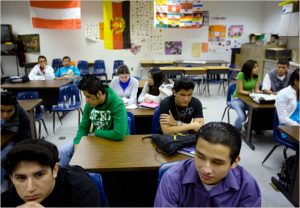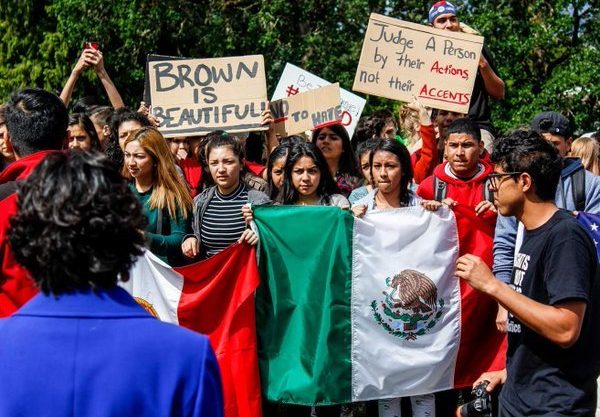
In Jeffrey C. Wayman’s article “Student Perceptions of Teacher Bias,” white teachers can read a way in which their Chicano students view them. Immigrant families consider the relationship between a student and a teacher to be a valuable one so a lot of trust is given to teachers because they are responsible for education children. Most article claim that all Chicano students feel ignored because teachers don’t expect much from them and perceive them to be the “other,” but breaks apart why some students feel that way and others dont. Chicano students that aren’t considered to be doing well in their academics strongly believe that their teachers are biased so they favor white students over brown students. These students don’t put in effort in their studies as a form of resistance to show teachers that they refuse to become consumed by white culture. On the other hand, there are Xicano students that are doing well like their white counterparts in class so they don’t see their skin color or their accent as a barrier to their academic success. This article can help teachers develop an understanding of cultural sensitivity to strengthen their teaching skills in a multicultural setting where all students feel welcome in a healthy learning environment. White teachers need to address racism and white privilege in class.
Listening to Teachers of English Language Learners

In the Policy Analysis for California Education article Listening to Teachers of English Language Learners, teachers considering a profession in English Language Learning can understand the obstacles they are going to face when addressing the language barrier of immigrant children or children of immigrant decent. ELA teachers are in high demand in California because the state has the largest amount of students in the country that speak Spanish as their first language because California is one of the states that shares a border with Mexico. These Mexican-American students speak Spanish at home with their parents, which makes it difficult for teachers to teach english because it’s not practiced at home. Also, ELA teachers have problems communicating with students parents because they do not understand nor do they speak English, apart from cultural differences, so teachers have no way of to make personal connections to understanding what their life at home. Teachers are put in situations where they are given students at different levels of the English Language Arts curriculum. The teachers have to juggle teaching them English, while making sure they keep up in other subjects. This article enables ELA teachers to understand how to help Chicano students more if they know their language and culture.
